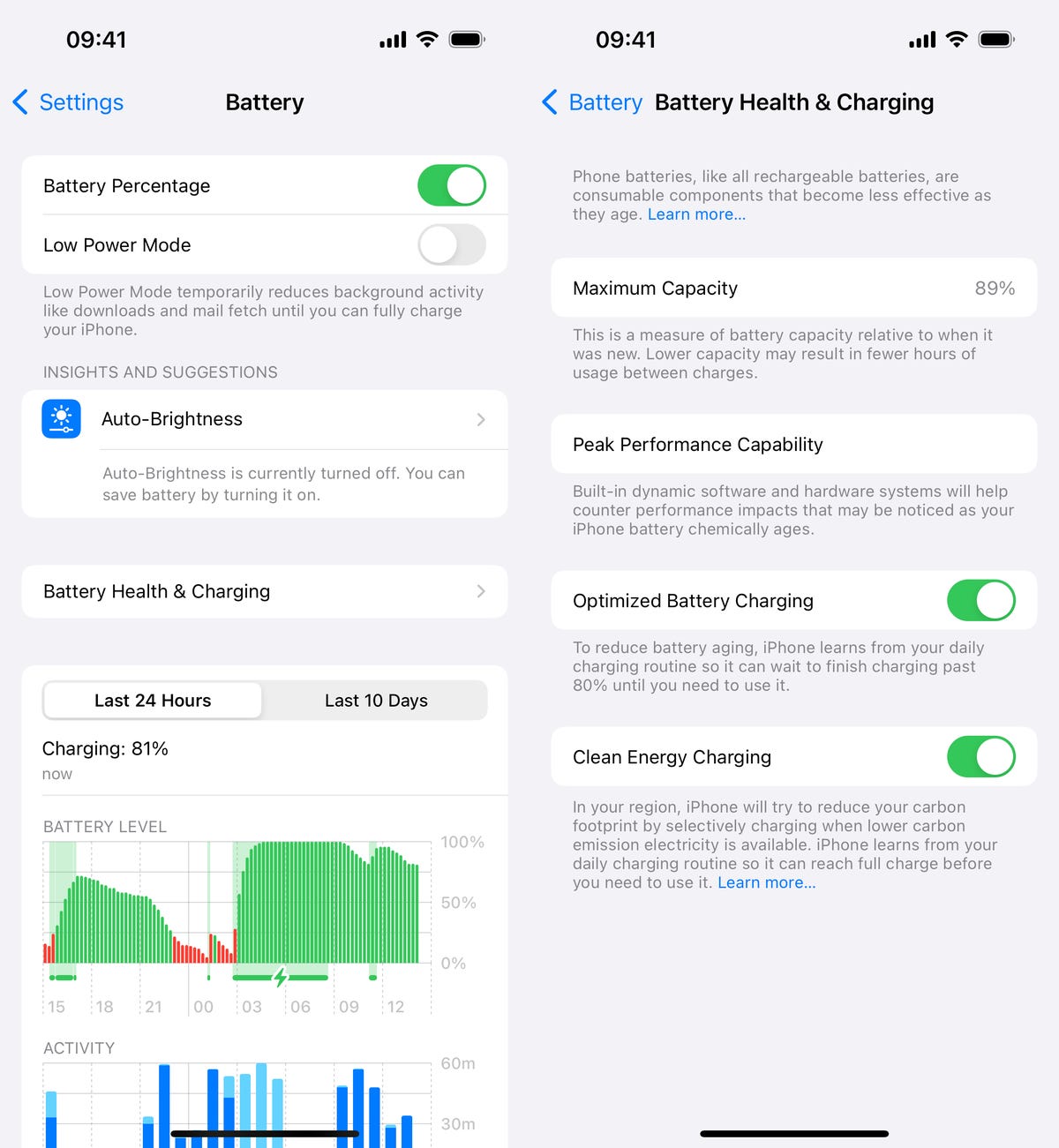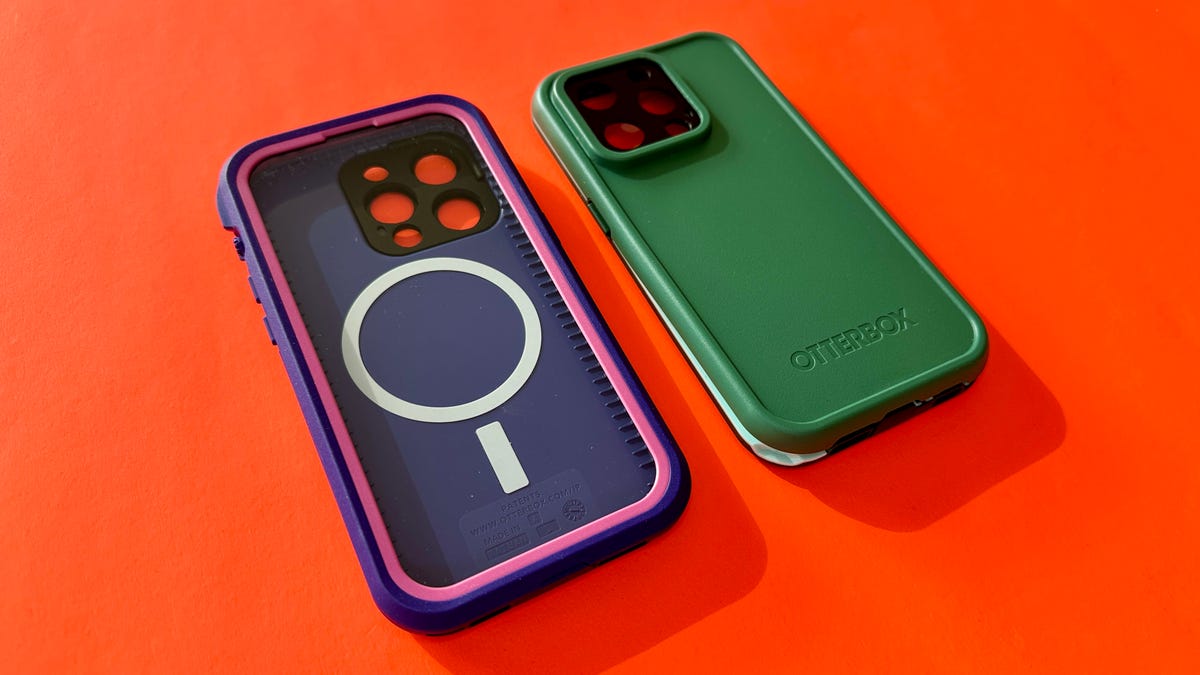Battery life span, not to be confused with your battery life, is the length of time your battery has before you need to replace it. The rechargeable battery in your iPhone should work at optimal capacity for (hopefully) a couple of years at the very least, but that depends on a variety of factors, like environmental temperatures, how you charge your battery, drop damage or a faulty battery. (“Battery life,” on the other hand, is the amount of time your battery lasts before it needs to be recharged.)
Don’t miss: Does the iPhone Have a Battery Aging Problem?
If you aren’t quite sure what to do to help prolong your iPhone battery’s life span, who better to advise you than Apple? Below you’ll find a few tips directly from the company that’ll help keep you from having to replace your battery sooner rather than later.
And while we’re on the subject of your phone, here are a couple of other CNET stories you’ll want to peruse: Find out how you can swap out your own iPhone battery, and check out the steps you can take to prevent your iPhone from overheating.
And now, on to the battery tips…
First, make sure this setting is enabled
Though you can’t overcharge a battery, you can put your battery under a bit of stress when you charge up to 100%. To help limit that strain, your iPhone has a setting that learns from your daily charging routine (say you always plug in your phone right before you go to bed and then unplug it in the morning). It then waits to finish charging past 80% until right before you need it, instead of just quickly charging the battery all the way to 100%.
This can help reduce battery aging, and though the setting should be enabled by default, it’s still good to check if it’s on. In Settings, go to Battery > Battery Health & Charging and make sure that Optimized Battery Charging is toggled on.


The setting should be on by default, but it never hurts to look and confirm.
Limit your iPhone’s exposure to extreme temperatures
The life span of your iPhone battery can be affected by extreme temperatures. A higher temperature increases the speed of chemical reactions inside the battery, which forces the battery to work harder and faster, thus also causing it to degrade faster.
According to Apple, it’s important to avoid exposing your iPhone to temperatures higher than 95 degrees Fahrenheit (35 degrees Celsius) to avoid permanent damage. Fortunately, the fix is simple — keep your iPhone out of hot temperatures. If you’re at the beach, don’t leave your iPhone on your towel in direct sunlight. Instead, toss it into a bag or put a shirt over it for protection. Also, don’t leave your iPhone in the car for an extended period of time, especially if it’s a hot day.
Apple does have a few settings to prevent overheating and damage, like disabling your phone or preventing further charging when your phone is too hot, but you don’t want to rely on these features to save your phone’s battery health. It’s better to take preventative actions than wait for your iPhone to overheat.


You may need to remove your iPhone’s case sometimes
If your iPhone gets hot any time you charge it, you may need to take off your case before doing so. Certain cases, especially the bulkier and more protective ones, can trap heat and make the iPhone overheat, affecting the battery’s life span.
Apart from removing the case, consider avoiding processor-intensive apps, like games, when your phone is charging. Using these apps while charging could also cause your phone to overheat.


Some cases may trap warmth and cause your iPhone to overheat when it’s charging.
Plan on storing your iPhone away long term? Do this
Maybe you got a new phone and want to stash your old iPhone for a bit. If you want to maintain the battery’s life span, you should do the following before putting it away:
- Keep the charge at around 50%. You don’t want your battery to be full or empty before you turn it off, or else it could stop holding a charge (if full) or lose capacity and have a shorter life span (if empty).
- Turn your iPhone off. This prevents your phone from using up more battery.
- Store your phone in a cool and moisture-free environment. Ideally, the temperature should be less than 90 degrees Fahrenheit (32 degrees Celsius).
- If you’re putting your iPhone away for longer than six months, turn it on and charge it to 50% every half a year.
If you store your iPhone for a long time, it may be in a low-battery state, which just means you may need to charge it for 20 minutes before it turns on.
The Apple event is only a few weeks away, but you don’t have to wait until then to read up on some of the new hardware and software. Check out the iPhone 15 camera rumors and how you can download the iOS 17 beta right now.
